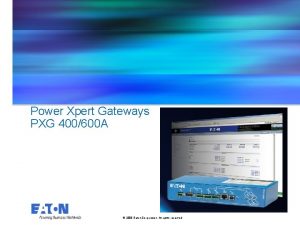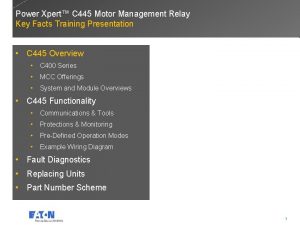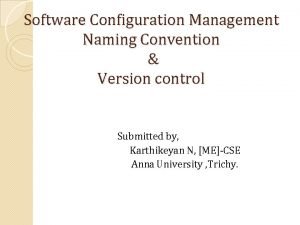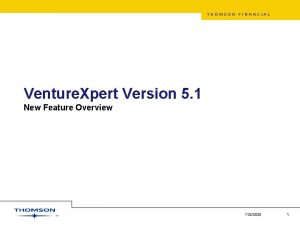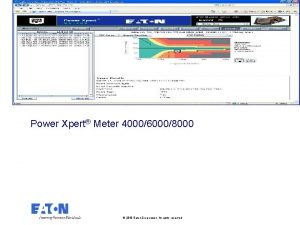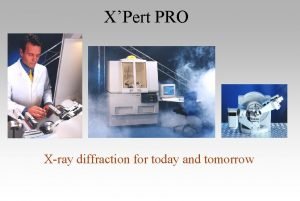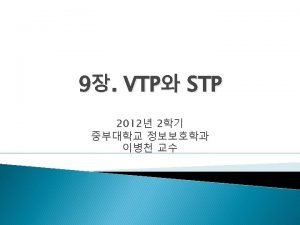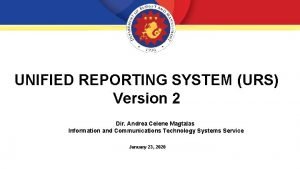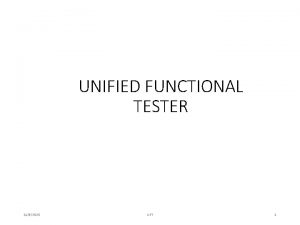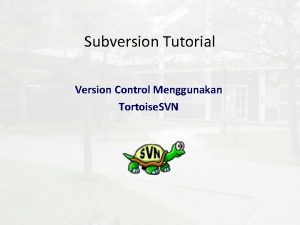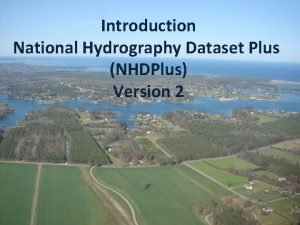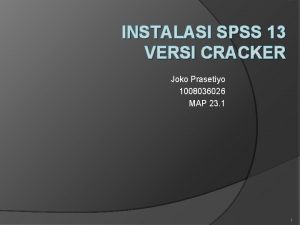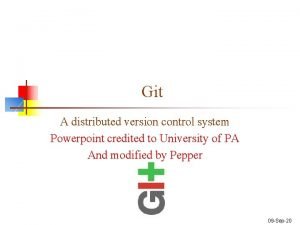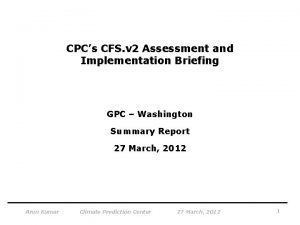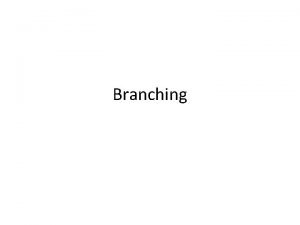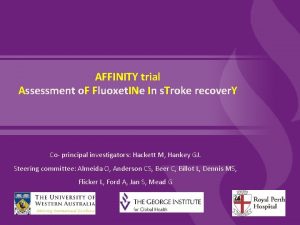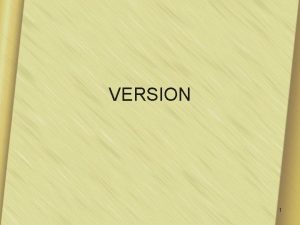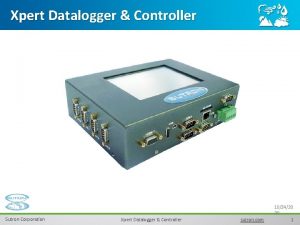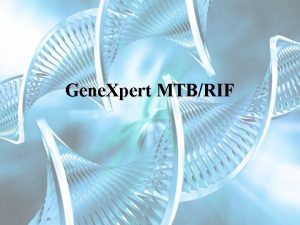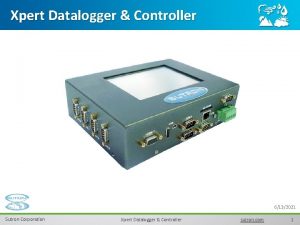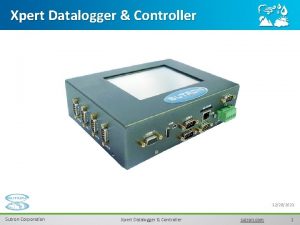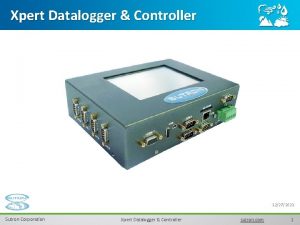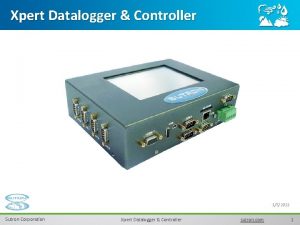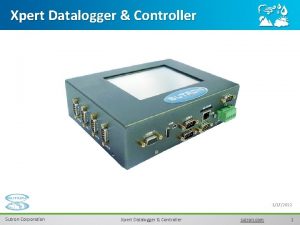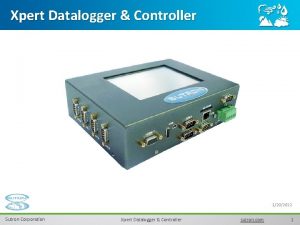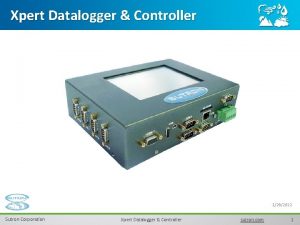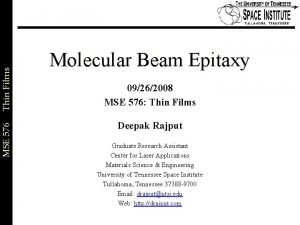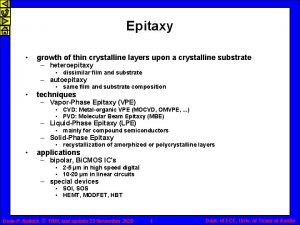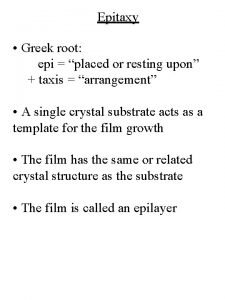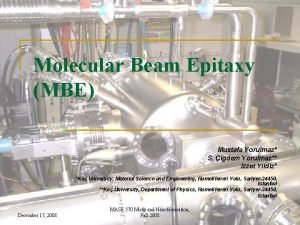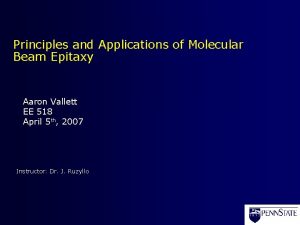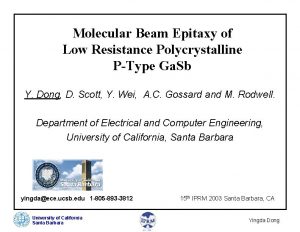XPert Epitaxy Software Version 3 0 Xpert Epitaxy


































- Slides: 34

X’Pert Epitaxy Software Version 3. 0

X’pert Epitaxy Functionality • Graphics for single scans, area scans and wafer maps • Peak finding and labelling for single and area scans • Results from rocking curves and maps • Rocking curve simulation • Orientation and unit cell calculations

New Features in Version 3 • Simulation of hexagonal nitride alloy layers with choice of substrate • Modelling of relaxed interfaces and diffuse scattering • Plotting up to six area scans in one window • Extraction of line scans at any angle • Smoothing of single scans • Summary results for rocking curves released November 1999

Plotting Single Scans • Load from X’pert database or from file • Linear/square root/log • Degrees /relative seconds • Zooming

Editing options • Removing or adding scans to current window • Editing header • Adding text • Smoothing blue - experimental curve red - all values below 100 cps smoothed

Finding and labelling peaks • Peak position marked automatically or using cursor • Substrate, Layer and Fringe labels used by Results menu • Peak list display

Defaults for single scans • Folders • Single plot options • Palettes • Use relative seconds • Peak finding • Wafer map settings

Sample Files • Sample files contain information about heteroepitaxial layer structures • Rocking curves are simulated using the information in the sample file • The information is also used by the Results menu

Sample Files : Materials Supported Materials supported: • Diamond: e. g. Si, Ge • Zinc blende: e. g. Ga. As, In. P, Al. Sb • Hexagonal nitrides: Al. N, Ga. N and In. N • Sapphire and silicon carbide substrates

Layers and Substrates (1) • Single layers with or without composition grading – grading options: none, linear, convex or concave • Superlattices, and superlattices within superlattices • In-plane rotation for nitrides on sapphire • Relaxed interfaces

Layers and Substrates (2)

Layers and Substrates (3)

Versatile sample editing Tree view of current sample T 1 - Ga. N layers linked by thickness B 1 - alloy layers linked by thickness and composition Add, delete and link layers Edit the highlighted layer Save and exit

Rocking curve simulation • Based on the work of Professor Paul Fewster • Uses Takagi-Taupin equations for diffraction by distorted crystals • Full data base of materials parameters and X-ray scattering factors supplied • Convolution functions for high resolution monochromators and double crystal diffractometers Note: Simulation is not available in X’Pert Epitaxy Graphics

Convolution (Adding instrumental/sample effects) • • • Monochromator type Background Counting statistics Sample curvature Diffuse scattering Convolution can be performed as part of the simulation process or applied after simulating the diffracted intensity

Simulating rocking curves Optional mismatch plot Range and step size in degrees or seconds Rocking curves with and without convolution

Ga. N on Sapphire Experiment First simulation Second simulation 10 well nitride device on sapphire

Defaults for simulations • Default substrate and layer combinations for all six substrate types • Default simulation and convolution settings • Automatic saving

Results from Rocking Curves • d-spacing mismatch • Results summary • Layer mismatch • Layer composition • Layer thickness • Superlattice period • Sample curvature

Superlattice Period Fringe spacing and period averaged over all marked satellites

Results Summary for Rocking Curves • Composition, mismatch and layer thickness calculated together • Edit substrate and layer materials directly or use sample file • Print out on a single sheet: Box for editing substrate and layer materials

Updating sample files Calculated results Results used to update sample

The Log • Send results to log • Send sample details to log • Send simulation details to log • Print out from log • Save as text file from log

Plotting area scans • Load from X’Pert database or from file • Up to six scans per window • Linear/square root/log intensity scaling • Angle scales or reciprocal lattice units • Zooming • Semi-automatic peak find Bitmap (angles) Contours (reciprocal lattice units)

Multiple area maps • Plot up to 6 maps in a window • Use : – when you do not want to collect data between peaks – when you have not collected a large enough area on the first attempt – to plot scans collected with different optics together new plotting functionality

Peak Find q Use semi automatic peak find q Label peaks to be analysed

Parallel & Perpendicular Mismatch • Mark substrate and layer peaks • Determine mismatch in two directions from a single asymmetrical map • Determine tilt between substrate and layer planes In reciprocal space

Parallel & Perpendicular Mismatch Angle plot Example Relaxed Ga. In. As on Ga. As

Editing options • Removing or adding scans to current window • Extracting single scans • Extracting area scans • Projecting onto axis • Editing header • Adding text

Using the Extraction Line • Extract lines scans at any angle from maps • Extract Q scans from reciprocal space maps extraction line extraction angle pull on handles to change angle and length

Defaults for area plots • Area plot options • Scan treatment options • Folders • Manual levels • rlu values • Palettes

Wafer Maps • Peak parameters and results from a regular array of rocking curves • View contours, values or both • Linear or manual contour levels • Editable outline shape for wafer

Orientation and Unit Cell Determination • • Calculate orientation from positions of measured peaks Calculate unit cell from position of measured peaks Uses the same lattice parameter data as the X’Pert Data Collector

X’Pert Epitaxy 3. 0 Plotting and analysis software for X’Pert PRO users interested in sample perfection
 Eaton power xpert software download
Eaton power xpert software download Motor management relay
Motor management relay Software numbering conventions
Software numbering conventions Accessxpert schneider
Accessxpert schneider Venture xpert
Venture xpert Pxm8000
Pxm8000 Xpert® mtb/rif
Xpert® mtb/rif Dr xpert security
Dr xpert security Anti scatter slit
Anti scatter slit Xpert net
Xpert net Toad xpert
Toad xpert National numeracy learning progression
National numeracy learning progression Vtp version 3
Vtp version 3 Version control systems industry
Version control systems industry Urs.v2
Urs.v2 Uft1
Uft1 Trigonometry magic triangles
Trigonometry magic triangles Intents of the heart
Intents of the heart The apostles creed prayer
The apostles creed prayer Svn tortoise tutorial
Svn tortoise tutorial Risk student version
Risk student version Que es sac
Que es sac Both alike in dignity
Both alike in dignity Alan rea
Alan rea A revised version of little red riding hood answers
A revised version of little red riding hood answers Version latina de la sagrada escritura
Version latina de la sagrada escritura Nhdplus version 2
Nhdplus version 2 Spss13
Spss13 Git tutorial for beginners ppt
Git tutorial for beginners ppt Normality test
Normality test Cfs version 2
Cfs version 2 Version control branching
Version control branching Fluoxet
Fluoxet Bipolar podalic version
Bipolar podalic version Togaf version history
Togaf version history
